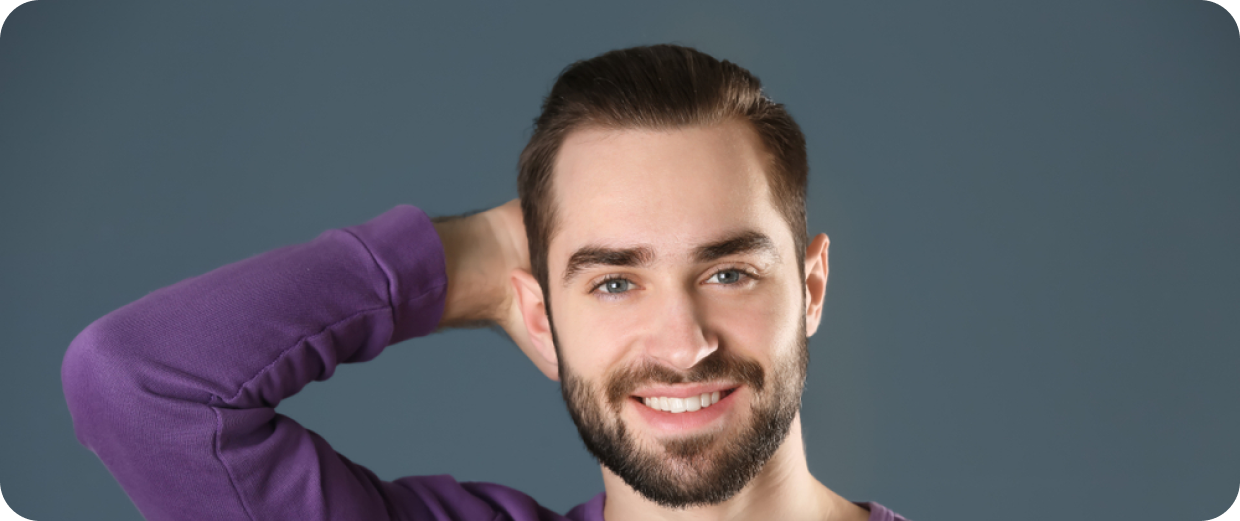about dhi
hair transplant
Welcome to Istanbulhair, where we consider DHI hair transplantation not just as a procedure, but as an art form to restore your natural beauty. Our commitment to excellence and innovation makes your DHI experience at Istanbulhair unique and successful.

Our DHI Approach
Blood Collection for Successful Treatment:
This step lays the foundation for a flawless operation and optimal results.
2. ICE Grafts for Long Lasting Result:
At Istanbulhair we use ICE Grafts, a unique method in which the grafts are kept cool. This means that the transplanted hairs have a longer life than normal, resulting in a permanent transformation.
3. DHI with Lines Technique:
Our DHI treatment starts with the precise lining technique. You determine the desired result. We take into account the muscle line, which plays a crucial role, and sometimes this limits us in the low. Your satisfaction comes first.
4. Hair Transplant Filling from 500 Grafts:
In addition to DHI, we offer hair transplant filling, starting from 500 grafts. Request a free consultation to discuss the options and explore your wishes.
5. Free Consultation Including Hair Scan:
What can you expect from our free consultation? A thorough hair scan to accurately analyze the donor area and a comprehensive pre- and aftercare plan. Your comfort and satisfaction are our priority
About DHI Hair Transplant
Under local anesthesia, hair follicles are individually removed from the donor area and transplanted directly into the desired area.
No stitches required, minimal wound size. The optimal result will be revealed after 7 to 12 months, during which your natural hair growth will be restored.
DHI Method in Detail
The hair roots are extracted with a tiny hollow needle of 0.6/0.8 mm, and small incisions are made for a natural-looking result. Choose Istanbulhair,
where expertise, innovation and care come together to make your hair transformation a success.
our method
with the
dhi method
Step 1: Sign off
The operation goes as follows. A medical team led by a Dutch BIG registered doctor.
We first consult with you about what shape you want and then we draw the desired shape.

Step 2: Anesthesia
A DHI hair transplant is always performed under local anesthesia, so you will not feel any pain during the operation. After the procedure, mild after-pain may occur temporarily.

Step 3: Collect the follicles
The grafts are removed from the safe donor area. Through years of experience, our doctors know how to select the optimal donor area for you. We select only the best quality Grafts that will not fall out for the rest of your life.

Step 4: Implanting grafts
The micro incisions are then made in the receiving area in which the hairs are placed. After making the incisions in the recipient area, the Grafts are replaced.

Step 5: Result
Because we shave your hair during the DHI hair transplant, no evidence of the operation is visible since your existing hair covers the bald spots. We ensure the best results by providing the correct aftercare and recommending the correct medication.

Difference DHI compared to other techniques
The big difference with other hair transplant techniques is the special, developed equipment that directly harvests and implants the grafts. In addition, it is not necessary to shave your entire head, just parts of donor areas. This technique ensures that a hair transplant can be performed more efficiently.
Frequently Asked Questions
What are the advantages of the DHI method?
What are the disadvantages of the DHI method?
Can the DHI hair transplant be applied to every patient?
Is the DHI method suitable for both men and women?
I suffer from eczema or have problems with my skin, can I be treated with the DHI method?
How long does a DHI hair transplant take?
When can I have my hair dyed after a DHI hair transplant?
Will I get a scar after a DHI hair transplant and what complications can arise?
Complications are rare with a hair transplant. Possible complications include:
An infection. You will receive advice to minimize the risk of this happening. Then an infection occurs hardly before.
An allergic reaction to the local anesthetic. This almost never happens.
A 'numb' feeling in the area where the hair has been removed. This is annoying, but can't hurt. It will go away on its own after a few weeks.
Swelling of the forehead. This can especially happen if hairs have been transplanted to the front of the head. Sometimes the face also swells. The swelling will subside naturally after a few days.
Ingrown hairs. This will pass on its own.






